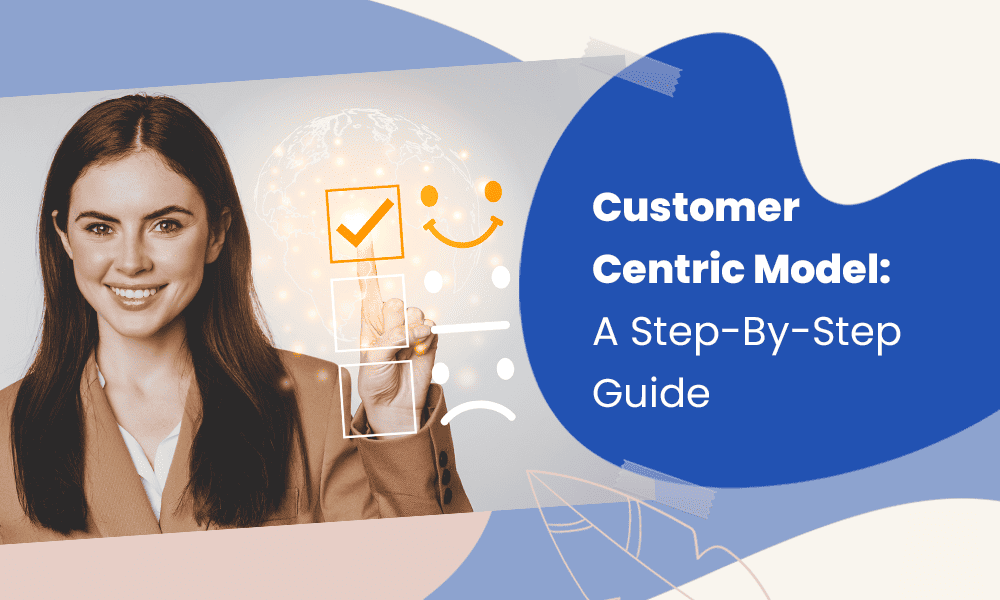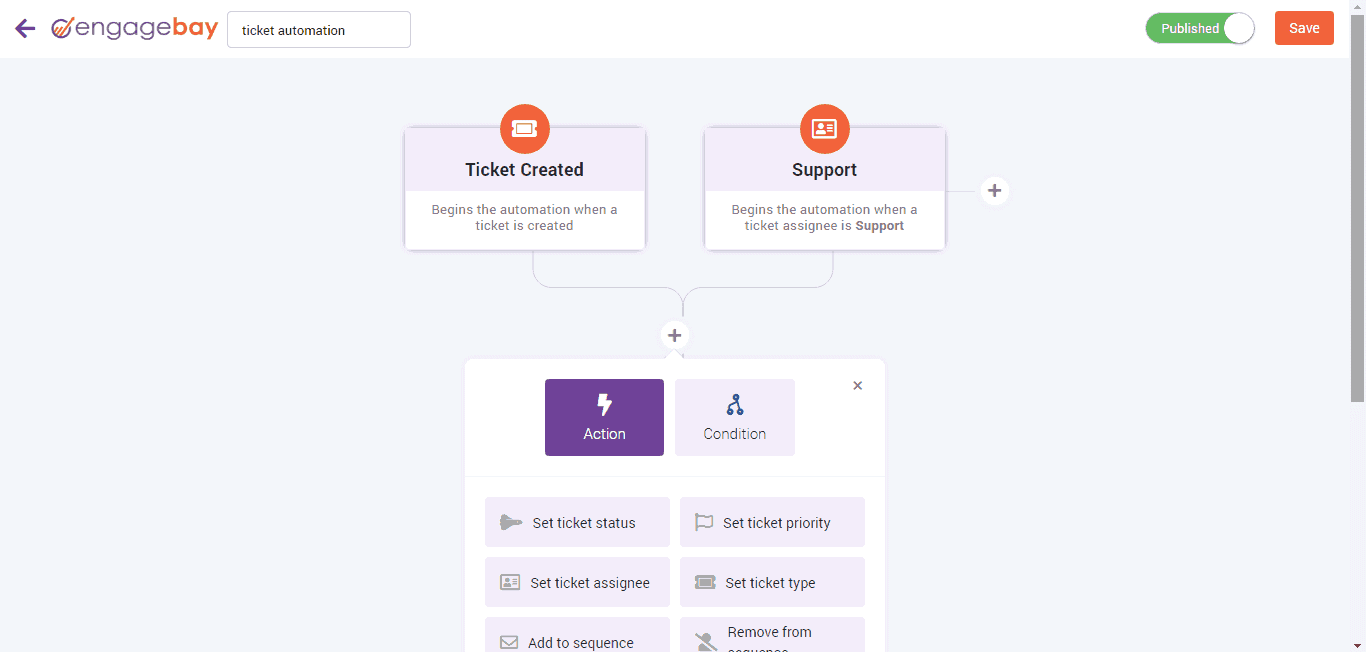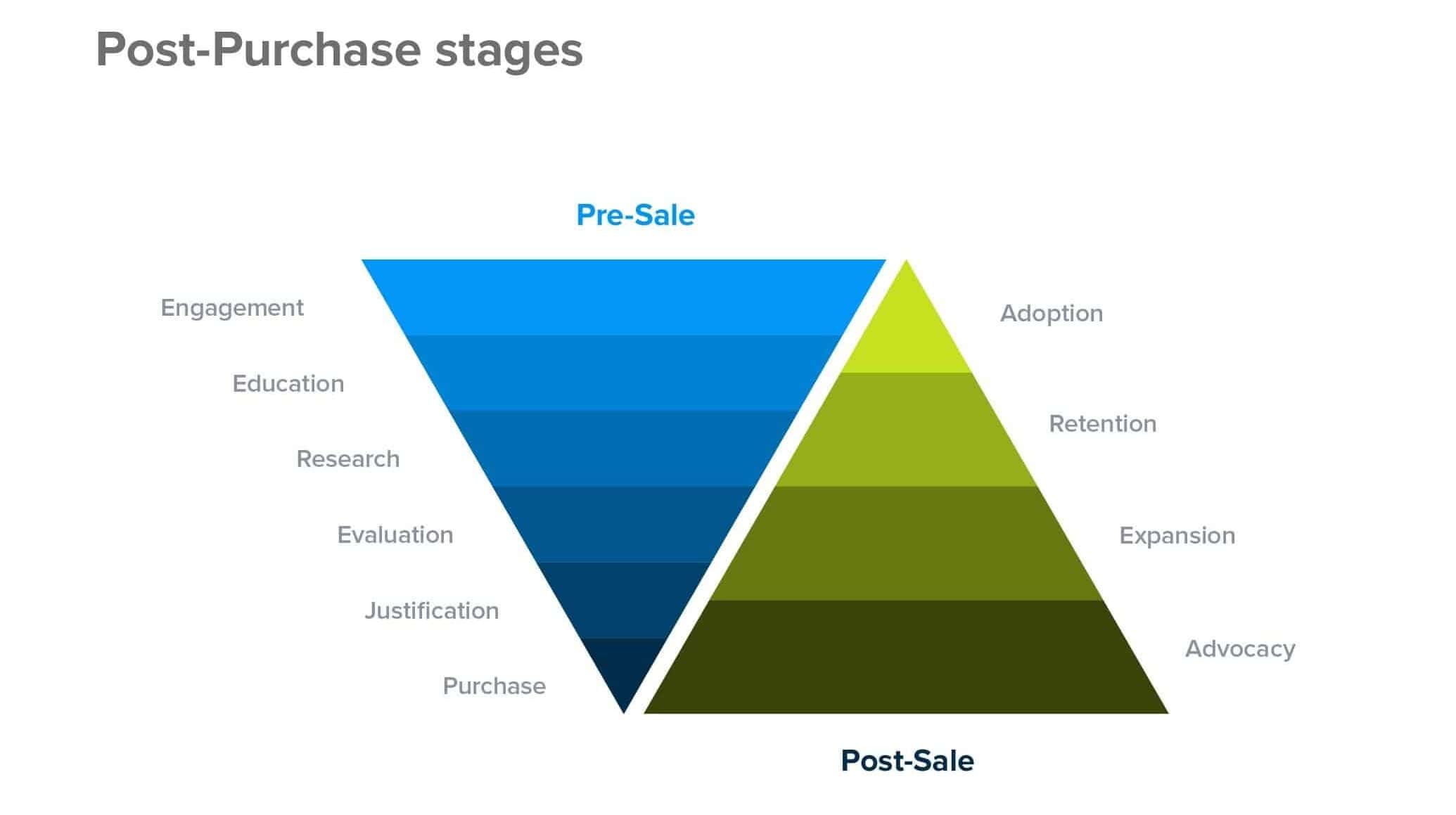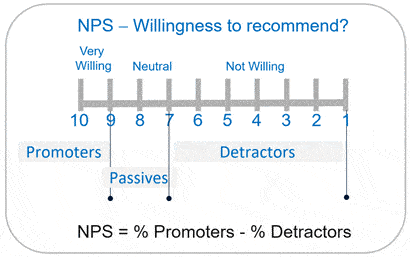Does your company have a customer-centric culture?
More and more businesses are honing in on a customer-centric approach. There even exists a model for defining and planning a company’s customer centricity.
A customer-centric business model can enhance customer satisfaction, retain customers, bring in new ones, and boost sales.
With customer centricity, you begin by understanding your customer’s needs, desires, and expectations, and then frame your products, services, and campaigns to suit your customers’ needs.
In this blog post, we’ll explain:
- The customer-centric business model
- The importance of incorporating customer centricity into your business processes
- The steps to make your business customer centric
- How to measure and quantify customer centricity
Happy reading!
Table of Contents
What Does It Mean to Be Customer-Centric?
A customer-centric business model refers to the process of doing business in a way that enhances customer satisfaction, not just during the initial stage, but throughout the customer lifecycle.
To make something centric is to put it at the center or forefront. Thus, when your business begins implementing customer-centric marketing or customer-centric selling, you’re focusing on the customer experience.
In other words, you’re looking at everything your company does from the customer’s viewpoint. What do they like? How do they prefer things? What do they need?
For instance, your customers might need a more responsive customer support. In that case, you’ll need to get a VoIP phone system which ensures you’re able to provide quick solutions to customer queries and offer maximum satisfaction.
The Customer-Centric Model
As we talked about in the intro, many businesses follow a customer-centric model. Here’s what a customer-centric model looks like.
Image courtesy of Relay42
As the illustration shows, a client-centric approach is a five-pronged one. Think of the model as a building.
To clarify how you should guide your company to make it a customer-centric organization, here is a deeper, more thorough explanation of each part of the consumer-centric model.
Leadership
The leadership team’s responsibility is to brainstorm tasks and projects that revolve around your customers and foster customer centricity.
Also, your entire company should begin working to address customer concerns and solve their issues promptly.
Your company leadership holds up your company’s use of platforms, your processes, and the key people involved with your organization.
Here’s where it all begins. You need to focus on strengthening this area of your business first. Without strong leaders, it’s hard to brand your company and position yourself as a business your consumers can rely on for consistently high-quality products or services.
Once you feel more confident in your company’s leadership, you can work on defining what your strategy will be, which processes and platforms it will entail, and which members of your company will be the ones to drive it.
Strategy
The work done on the leadership level is what begins to form your client-centric strategy. More than likely, the current business strategy your company is relying on could use some retooling so it meets more customer demands and increases customer centricity.
Here are some components that a workable customer-centric strategy should have:
- Long-term evaluations of success: Short-term successes are not necessarily enough to determine how well your company is serving its customers and ensuring a great customer experience. These successes should also become longer-term if you want to retain your customers and build brand loyalty. Additionally, you need to define what your successes are to your company, how you track results, and whether what’s viewed as a success among your staff is perceived the same way by your customers.
- Interdepartmental customer satisfaction KPIs: If you’re all working towards the same goal — which is serving your customers to the best of your ability — then your customer-centric company must operate as one. That means that among all the departments, you should use the same key performance indicators or KPIs to gauge what customer satisfaction looks like. The KPIs you need to focus on include:
-
- Net promoter score
- Customer lifetime duration
- Customer lifetime value
- Average journey completion time
- Customer effort score
- Task completion rate
- Escalation rate
- Customer churn rate
- Average resolution time
- Daily complaint numbers

Processes
At this point, you can move on to the next part of the customer-centric model: processes.
To have your company work based on customer centricity, you’ll need to define the processes necessary to get there. These processes will show you the direction to aim your sales and marketing campaigns.
Since a company’s processes are unique, this stage of the model differs from one business to another.
Ask yourself the following question to know if your workflows and processes follow the customer-centric model: Are you using customer insights to influence your product and project roadmaps?
If you said no, then you still have more work to do.
Do you currently deal with any obstacles that might prevent transmitting these customer experience insights from one department to another?
People
Besides the leadership team and your senior management, you can introduce other key members of your company into the fold as you work to be more consumer-centric.
It’s important that everyone is trained on what the new expectations are and the measures your company will take to reach these milestones.
You should also have resources that your customer-centric team can easily and reliably use when they need guidance or more information on any part of the customer journey or campaign.
From customer interviews to insights, customer feedback, buyer personas, and customer profiles — these customer data will come in handy while making your company ‘customer centric’.
Platforms
The last part of your consumer-centric journey through modeling is the platforms of choice. Your company, of course, has an array of tools, apps, and software you use daily.
To determine whether you want to keep using certain platforms moving forward, ask yourself a few important questions.
First, does the platform allow you to connect customer interactions and information to each customer profile and increase customer centricity?
Can you use the platform for traditional and digital channels alike? Does the platform allow you to keep customer insights along their journey? If yes, then it’s suitable.
Also read: What is Experiential Marketing (And Our Favorite Examples)
Why Is Customer Centricity Important?
Here are some reasons that will convince you to put in the time to rework your company processes to achieve complete customer centricity and deliver a great customer experience.
- Increased customer loyalty and potentially new customers
- Higher chances of sales
- Unhappy customers rarely talk about their dissatisfaction
- It costs more money to chase leads
- You could earn more profits
Let’s understand how.
Increased Customer Loyalty and Potentially New Customers
According to Temkin Group’s The Ultimate CX Infographic, when your customers are happy with their purchase or experience with you, they have a 3.5 times higher chance of buying from you a second time.
These customers are also going to tell their friends and family about their customer experience five times more often compared to having bad experiences.
This could cause new leads to trickle into your funnel.
Understanding customer expectations, needs, and desires can help you gain trust, market better, and sell faster.
Higher Chances of Sales
When you’re happy with a company’s services and you feel you can trust them, are you more willing to buy from them? Of course.
The same logic applies to your customers. According to statistics from LiveChat, your sales team has a 14 times higher chance of selling to a customer who’s already happy with their customer experience with you.
Unhappy Customers Rarely Talk about Their Dissatisfaction
If you look at the reviews page for any product or service, you’re bound to see some negative feedback sooner or later.
This can give you the expectation that when a customer has a bad customer experience with a company, they’ll be sure to say something.
Sure, some do, but it’s likely far fewer than you would have thought. According to a 2017 Huffington Post article, out of 26 unhappy customers, only one will talk about their experience.
The other 25? They bail out.
Image courtesy of SuperOffice
When you stop to think about this, it makes sense. Whether a customer complains through an email, live chat, by phone, or on social media, they’re still taking time out of their day to do it due to a bad customer experience.
You have to expect that most of your customers are busy people. Thus, though they may want to complain, they don’t get around to it.
It’s easier and faster to just abandon your company and never look back.
It Costs More Money to Chase Leads
All companies want to spend smartly, as a penny saved is a penny earned.
According to Huffington Post, it costs a company six to seven times more money to convert a lead than it does to retain a customer — meaning customer acquisition is more expensive compared to customer retention.
You have to pull all the stops when courting a lead, such as research into segmenting, personalized emails, follow-ups, and other tailored campaign elements. This doesn’t come cheap.
We’re not suggesting you abandon your influx of leads to keep your current customers onboard, just that you don’t disregard any customers because you have plenty of leads.
Your customers have already converted, meaning they’re interested in your products/services and are more willing to buy.
You don’t have that same luxury with your leads. You could get 1,000 leads in a day, but if only 50 of them are interested in your company’s products and services, then the other 950 ultimately don’t further your business.
That makes them far less valuable than your customers.
👉Empower your customer management with the best practices – learn more in our expert guide! 💪
You Could Earn More Profits
In a guide from consultants Brain & Company, it was found that boosting your customer retention rates by five percent is enough to drive profits way up, between 25% and 95%
By taking a more customer-centric approach, we’re confident you could increase customer retention way past that 5% mark, thus seeing profits that increase as the number of loyal customers does.
Read aslo: What Is Buyer Intent and How To Use It to Your Marketing Advantage?
How Do You Build a Customer-Centric Business Model?
So how do you create a customer-centric business? If you already own a business, how do you incorporate customer centricity?
Those numbers really resonated with you. You’ve realized that you’re missing out on loyal customers and more revenue by not following a client-centric approach.
You’re ready to begin prioritizing building customer centricity in your own company, but you’re not sure where to start.
Here are some customer-centric strategies your company can follow today:
- Focus on customer marketing
- Start a compensation program
- Start hiring more customer-centric employees
- Tap into customer empathy
Focus on Customer Marketing
Customer marketing is not your average type of marketing.
Favored by the likes of Apple and Amazon, customer marketing refers to promoting products and services that your customers deem valuable — rather than the ones you think will be valuable to them.
You should use customer-centric marketing from the moment your customer buys something from you (post-purchase phase) all the way to the end of the journey.
The pillars of this marketing approach are advocacy, expansion, retention, and adoption.
Read Also: Outbound Marketing Tips to (re)Brand your Company [Updated]
Image courtesy of SuperOffice
- Adoption: The adoption stage begins your post-purchase process. Adoption here refers to a customer becoming adapted to a service or product. You want this product or service to become a part of their everyday lives, and you can use in-app messaging and automated onboarding among your team to make it happen.
- Retention: This next stage is about preventing churn, which is what happens when weary customers decide to stop using your products and services. This can cost the average company upwards of $1.6 trillion, so churn is certainly something you want to avoid.
- Expansion: The third stage of the post-purchase process is expansion. This is about taking the customer you have now and expanding their customer journey so you can expect their repeated business for the next year, two, even three, or more. This can be done through a variety of ways, including upselling, cross-selling, extended warranties, and more.
- Advocacy: Advocacy is about the means your company uses to convert leads so you have new customers beginning their journey.
With customer marketing, you promote products and services that your customers deem valuable — rather than the ones you think will be valuable to them.
Start a Compensation Program
Another option you have for building a consumer-centric approach within your own company is to utilize a compensation program. Most customer-centric companies have some sort of compensation program to incentivize their employees while nurturing a customer-first environment.
This program connects employees to customers so every member of your staff has to make an effort.
Your compensation program should give employees financial bonuses for how adeptly they handle customers or for the number of customers retained.
With a compensation program, all members of your company will feel motivated to focus on customer satisfaction, as they’ll earn something out of the experience as well.
Start Hiring More Customer-Centric Employees
To streamline your customer-centric approach, you can also hire team members that already have a special focus on customers.
Whether your new hires were once customer service representatives or involved in human resources, they have the necessary skill set your customer-centric company is looking for as you begin to focus more on your customers and their satisfaction.
Tap into Customer Empathy
To feel empathy for another person is not the same thing as sympathy. When you’re sympathetic, you feel bad for a person and that’s it.
To be empathetic transcends feeling bad and allows you to connect with that other person through shared experiences.
When you have empathy for your customer, it means you understand where they’re coming from and what they need in that specific situation. You also know why they need what they do because you can relate to them.
Having empathy puts you in the customer’s shoes, so to speak, so you can quickly and efficiently come up with a solution that suits their problem.
If your team members don’t practice empathy yet, company-wide training can change that.
Read also: Customer Success And All You Can Do For It
Customer-Centric vs Product-Centric: Understanding the Differences
Your company has begun working on its client-centric approach, yet you still feel like there are some kinks you have to work out.
How can you ensure you’re being more customer-centric than product-centric? Here are some ways to tell the differences between the two.
| Aspect | Customer-centric | Product-centric |
| Flexibility | Flexible to customer demands | Fixed product offerings |
| Focus | Focuses on customer needs. | Focuses on product features. |
| Relationship Goals | Long-term relationship building | Short-term sales goals |
| Example | Amazon’s personalized recommendations | Apple’s focus on innovative features like Face ID |
Your Approach Is Flexible
When you have a more product-centric approach, it’s typically one with less flexibility. You want to sell, and you have X amount of ways you go about doing that.
Compare that to an approach that’s more about your customers.
You understand that throughout the customer journey, your customer’s needs are not necessarily the same from beginning to end.
You can be flexible enough to accommodate those changing needs so you’re always on top of what your customers want the most.
Your Process Are Streamlined
How you sell shows a lot about your brand. Do you focus on your products when you sell, or do you keep your customers in mind?
This can create instant problems, as there’s not necessarily an alignment between the customer’s needs and the product or service itself.
If the customer doesn’t need the product or service, the sales attempt will inevitably fail.
Instead of throwing a product at random (figuratively, of course) and seeing who’s interested, you look at your customer and what you know about them and then determine the best product/service for that individual.
Once you build up a good track record, you can keep going back to that same customer with different products and services that are also tailored for them and their needs.
Keeping in mind the flexibility that customer-centricity encompasses, this extends the customer journey far longer than a product-centric approach.
Customer centricity is not so one-and-done. Yes, you sold them Product A, but they haven’t seen Products B through E, and you think each of them could help your customer live a better life.
Read also: Perks & Examples of Customer Oriented Companies — Netflix, Slack & More
How Do You Measure Customer Centricity?
How do you know you’re doing it right? Here are some metrics you want to begin measuring right away.
| Customer-Centricity Metric | What is it? |
| Net Promoter Score (NPS) | A score from 0 to 10 given by customers to indicate how likely they are to recommend your services. |
| Customer Satisfaction (CSAT) | A score on a 1-5 Likert scale that measures how satisfied your customers are with your service. |
| Purchase Likelihood | A metric that shows the probability of customers buying your products or services again. |
| Customer Lifetime Value (CLV) | How much a customer is likely to spend on your goods or services over the course of their life. |
| Churn Rate | The percentage of customers who leave your service over a specific time period. |
| Customer Lifetime Duration | An estimate of how long a customer will continue to use your products or services. |
Net Promoter Score
When you ask your customers if they’ll refer your services to someone else in their life, they’ll give you a score from 0 to 10. How high that score is would be your net promoter score.
Ask your customers to rate how willing they are to recommend your products or services to someone else. Their answer is the Net Promoter Score.
Image courtesy of CustomerThink
If your customer answers low, such as 1 through 4, then they’re considered detractors. Between 7 and 9 are your passives, who have a more neutral approach.
Those who give your NPS survey a 9 or 10 are your promoters, as they’re the most willing to support your business in the future.
Customer Satisfaction
To achieve more customer centricity, you can also review your overall customer satisfaction, which is abbreviated as CSAT.
The CSAT also uses a score system of 1 through 5, known as the Likert scale. This uses psychometrics to gauge how happy your customers are.
Here’s what your CSAT may look like.
Image courtesy of CustomerThink
Purchase Likelihood
This rather straightforward metric indicates the chances of your customers buying your products or services, either initially or in a repeat instance.
Customer Lifetime Value
We said before that it’s important to focus on the most valuable customers, but how do you know who they are? Through customer lifetime value, of course.
To determine customer lifetime value or CLV, you need to know how much money your customer spends on your products and services over the lifetime of their customer journey.
Then, take that number and multiply the business relationship length.
To calculate customer lifetime value, figure out your average purchase value. Then take the average purchase value and multiply it with your company’s average purchase frequency rate.
Finally, calculate how much money you spent on conversions and then subtract that from your multiplied number to get your CLV.
Churn Rate
Churn rate, also known as attrition rate, is the rate at which your customers are leaving you.
Here’s how you calculate churn rate: Lost customers / total customers at the beginning of the time period) x 100.
Let’s say you had a thousand customers at the start of 2021. At the beginning of 2022, you lost 100 customers. So, (100/1000)*100 = 10% annual churn rate.
Customer Lifetime Duration
How long will your customers stick with you? While you can never say for sure, you can use some math to get a gauge on how long you may expect to retain each individual customer.
This is known as customer lifetime duration.
Customer Lifetime Duration is crucial for understanding how long a customer will stay and also helps to predict the ebb and flow of your customer base.
If you know that most customers stick around for about 18 months, you can plan your engagement strategies around that lifecycle. For instance, you might introduce a customer loyalty program at the one-year mark to encourage users to stay subscribed beyond the average 18 months. Or perhaps you could offer special promotions or exclusive content as the 18-month milestone approaches, aiming to extend that average duration.
If you see the average duration shortening, it might be a sign that you need to inject some new energy into your customer base.
Read also: SaaS Business Model Working Explained
Conclusion
In a nutshell, you need to have a customer-centric business model to retain customers, have a strong and long-lasting relationship with them, and boost revenue.
In turn, you’ll have a more loyal customer base that is eager to recommend your products or services to others — thus driving in new customers.
To become truly customer centric, you need to understand customer needs and customer behavior on a much deeper level.
A customer relationship management (CRM) software aid you as you focus on your customers. There are dozens of CRM software in the market today.
For small businesses, EngageBay is a great option. EngageBay aligns marketing, sales, and customer support teams around a single view of your customer — the very essence of customer centricity.
The best part? EngageBay is one of the most affordable CRM software in the industry. You get a host of tools to improve customer satisfaction: all for less than a dollar a day!
Want to read reviews first? Read them on Capterra.








